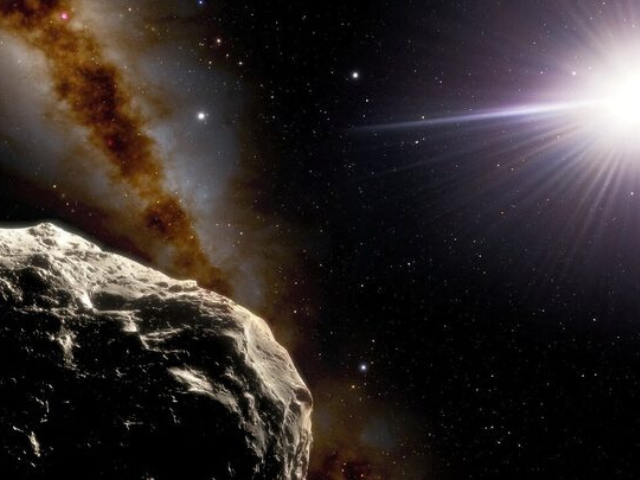Skyscraper-sized asteroid to skim past Earth next week
Asteroid 2024 ON, the size of a skyscraper, will fly close to Earth next Tuesday, according to NASA.

A potentially hazardous asteroid the size of a skyscraper is set to zip past Earth on September 17, according to NASA.
In a report published by Live Science, the skyscraper-size asteroid named 2024 ON has an estimated diameter between 721 and 1,575 feet (220 to 480 meters) and will zip past the Earth at 19,842 mph (31933 km/h) — or around 26 times the speed of sound.
Asteroid 2024 ON will come within 0.62 million miles (1 million kilometers) of Earth, about 2.6 times the distance to the moon. While a close pass by cosmic standards, it poses little to no threat to Earth.
NASA classifies any object within 120 million miles (193 million km) of Earth as a "near-Earth object" and considers those within 4.65 million miles (7.5 million km) as "potentially hazardous."
NASA tracks about 28,000 asteroids using the Asteroid Terrestrial-impact Last Alert System (ATLAS), which scans the entire night sky every 24 hours with four telescopes.
If asteroid 2024 ON hit Earth, it wouldn’t cause a mass extinction like the 7.5-mile-wide (12 km) asteroid that killed the dinosaurs, but it could still have significant effects.
In 2013, a 59-foot-wide (18 m) meteor exploded over Chelyabinsk, Russia, with a blast equal to 400-500 kilotons of TNT—26 to 33 times more powerful than the Hiroshima bomb—injuring around 1,500 people.
Space agencies are developing ways to deflect dangerous asteroids.
On Sept. 26, 2022, NASA’s Double Asteroid Redirection Test (DART) spacecraft successfully altered the orbit of the non-hazardous asteroid Dimorphos by 32 minutes, marking the first planetary defense test. NASA called the mission a success beyond expectations.
China is in early planning for an asteroid-redirect mission involving 23 Long March 5 rockets to target asteroid Bennu. The mission aims to divert Bennu, which will approach within 4.6 million miles (7.4 million km) of Earth between 2175 and 2199, from its current path.



















COMMENTS
Comments are moderated and generally will be posted if they are on-topic and not abusive.
For more information, please see our Comments FAQ